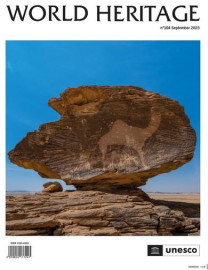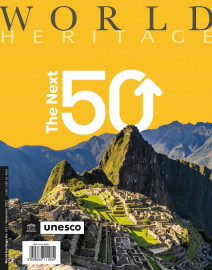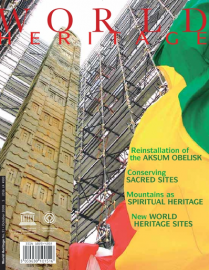DL Services SPRL
Rue Vanderborght 24
1081 Brussels Belgium
info@dl-servi.com
World Heritage Review 54: Astronomy and World Heritage
Available
The year 2009, designated International Year of Astronomy by the 62nd session of the United Nations General Assembly, marks both the 150th anniversary of the publication of Charles Darwin's The Origin of Species and the 400th anniversary of the first astronomical use of a telescope by Galileo Galilei. This issue is therefore mainly devoted to the astronomical and scientific aspects of World Heritage. It also includes a tribute to Darwin.
Two important aspects of astronomy relate to the concept of World Heritage. One of them relates to the preservation of important sites, monuments or landscapes that attest to the observation of the starry sky by all the civilizations of the world over the ages. A number of these sites are discussed in this issue. As noted in the article on "Astronomy and World Heritage", several World Heritage sites, including Stonehenge, Newgrange and Xochicalco, attest to an early human awareness of the regular movement of the Sun, Moon and stars, without having served as observatories.
Génération de facture pro forma disponible dans le panier.
The observatories of Greenwich or St. Petersburg, on the contrary, were obviously designed for this purpose, as were, in the 14th century, the Ulugh-Beg observatory in Samarkand (Uzbekistan) or the Jantar Mantar observatories in India (18th century), which bring together some of the most singular astronomical instruments ever executed in an architectural form. The other connection between astronomy and World Heritage will probably seem more unexpected: it touches on the very possibility that the present-day inhabitants of Earth can see the stars with their own eyes. We have admired the spectacle of starry nights, they have allowed us to speculate, dream and fantasize for thousands of years. The stars have also allowed us to guide our ships and caravans and we have identified them with our deities. Today, however, for the first time in human history and at the very moment when the first explorers of space are sailing beyond the atmosphere and space probes are bending the planets and their moons, the stars are no longer visible in our cities.


















